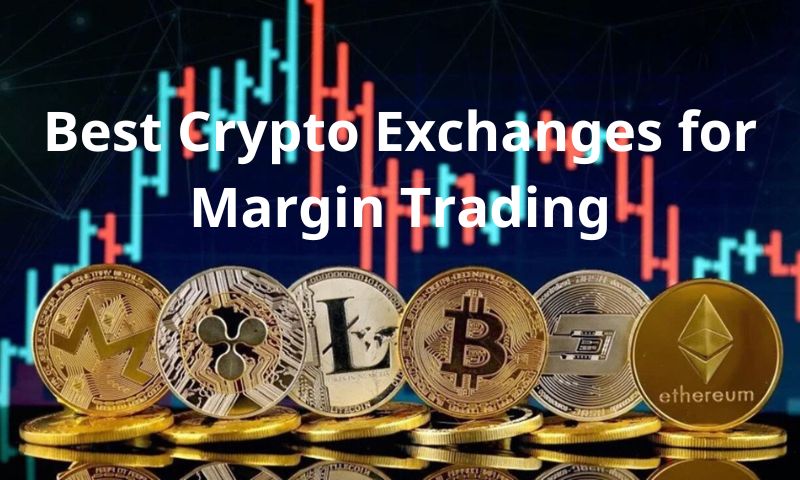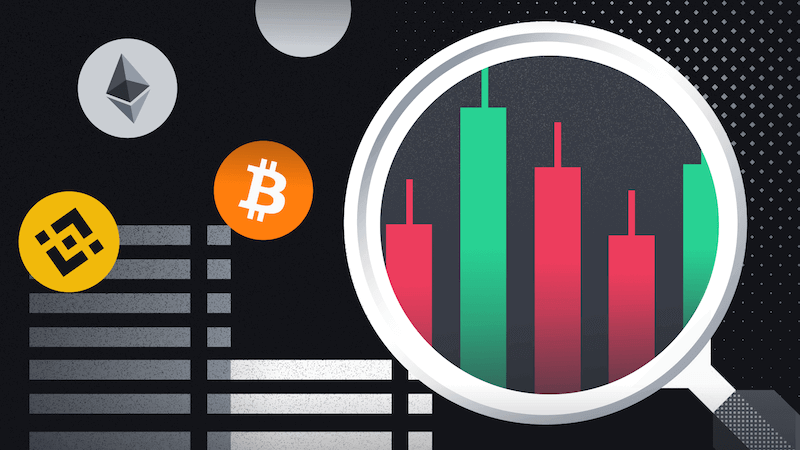Crypto Exchange Showdown: Ranking Giants by Trading Volume
Welcome to the ultimate crypto exchange leaderboard by trading volume! As your resident crypto guru, I peel back the layers of hype to reveal which platforms really move mountains of digital cash. Forget about guesswork; today, we’re focusing solely on hard, cold numbers. We’ve got our sleeves rolled up, ready to dive deep into the ocean of data. Here, in the digital currency colosseum, giants clash for the top spot. Who hustles hardest in the crypto trade game? Stay with me, and let’s unveil the titans leading the charge!
Unveiling the Titans of Trade: Who Leads the Crypto Exchange Space by Volume
Assessing the Top Players in the Crypto Exchange Volume Ranking
Let’s dive right into the thick of it. The true giants of the crypto world, the top exchanges, are more than just busy hubs. They are beehives of round-the-clock trading, where digital gold rushes happen in nano-seconds. Who’s the biggest of them all? The crypto exchange volume ranking gives us the scoop.
Crypto trade volume comparison is no child’s play. It means looking at heaps of data. I spend my days sifting through numbers, charts, and trends. But why does volume matter so much? It’s simple. More volume means more players. More players typically mean more trust, and in the money world, trust is king.
Imagine a busy market. Now, think of the loudest, most packed stall. That’s your high-volume crypto marketplace. These platforms deal in massive numbers of Bitcoin, Ethereum, you name it. Real volume crypto exchanges make the market tick.
Trading volume statistics for exchanges are my bread and butter. They show who’s trading what, how much, and how often. Watching the 24-hour crypto trading volume is like keeping an eye on the market’s pulse. The faster the pulse, the more action on the floor.
Overview of the Largest Crypto Platforms by Volume
When it comes to the largest crypto platforms by volume, a few names usually float to the top. There’s a dance of numbers happening behind the scenes, as digital currency trading leaders jostle for the top spot. Every Bitcoin trading volume peak makes waves. Every altcoin exchange volume metric twist turns heads.
But it’s not just about Bitcoin. Top exchanges for Ethereum trades matter too. That’s where we see market diversity – a healthy sign in any ecosystem. And with each monthly crypto exchange analysis, the picture gets clearer. The patterns emerge. Which platforms are growing? Who’s leading the charge in exchange volume percent growth?
Decentralized exchanges volume, however, is a wilder frontier. They might not yet measure up to their centralized cousins, but keep an eye on them. They’re growing fast, adding new flavors to the volume mix.
From the robust and reputable high-volume crypto brokers to the sharp spikes of exchange trade volume during events, it’s all part of the narrative. Exchange liquidity evaluation isn’t just about how much money flows through. It’s about the story behind the dollars, euros, and bitcoins.
The importance of crypto exchange market share can’t be overstressed. It’s a sign of clout and credibility. Fiat to crypto trading volume lights the way for new money entering the fray, while crypto to crypto exchange data gives a peek into the trader’s realm.
The bottom line? Volume speaks volumes. It reveals the giants, the movers, the shakers. It gives us the crypto exchange ranking factors that separate leaders from followers. Those with volume dominance in crypto exchanges are the ones writing history, set against a backdrop of trading pairs echoing in the data halls. Always bustling, always busy. This is the face of the market, and it never sleeps.
Behind the Numbers: A Deep Dive into Cryptocurrency Trade Volume Comparison
Deciphering Trading Volume Statistics for Exchanges
Trading volume tells us how much crypto was traded in a given time. Think of it as how busy a store is. A store with more customers likely sells more goods. In the world of crypto, we look at the exchanges in the same way. The busier it is, the more trades happen. It’s key to understand where people trade the most.
Big numbers jump out, but what do they mean? The numbers show coins exchanged over a period, like a day or month. These numbers are huge because global trade never sleeps. Exchanges with bigger numbers often mean more trust from traders. They come looking for other traders, better prices, and quick trades.
Analyzing High-Volume Crypto Marketplaces and Their Market Share
Let’s peek at high-volume exchanges. They’re where most action happens. Market share talks about their slice of the trading cake. A big slice means more people trade there.
Understanding an exchange’s slice helps in seeing its power in the market. Big players like Binance or Coinbase often come up as leaders. They have a big share because people trust them with security and options.
Good market share means a platform can offer better prices. It’s due to something called ‘liquidity’. This is like having enough cashiers in a store. More cashiers mean customers can buy and leave fast. In crypto, it means you can buy or sell at good prices, fast.
There’s a reason traders pick these busy spots. They offer lots of trading pairs, which are two kinds of coins that you can trade. Think of it as exchanging dollars for euros. Here, it’s Bitcoin for Ethereum, or others. Traders look for pairs with coins they know and ones they think will grow in value.
Altcoin exchange volume metrics, which are coins that aren’t Bitcoin, show us the popular ones. High numbers suggest many people are buying and selling them.
A big part of the game is derivatives. These are deals to exchange at prices set now but in the future. Their volume can predict where the market’s heading.
Another spot to look at is decentralized exchanges. No middlemen here – it’s all on tech! They’re growing because people like the control they offer.
And, don’t forget the Bitcoin trading volume. When Bitcoin trades a lot, the whole crypto market feels it. After all, it’s the big fish.
When we dive into exchange volume, we uncover the patterns traders follow. We see where they feel at home. These exchanges become hubs, crowded spots where everybody wants to trade. The numbers aren’t just tallies; they’re stories of trust, trends, and the beats of the market heart.
Watching these exchanges tells us more than just who’s biggest. It shows us where the crypto world is moving. It’s thrilling to piece this puzzle together. Trust me, in the crypto trade, the numbers are always telling an epic tale.
Liquidity Labyrinths: Evaluating Exchange Liquidity and Trading Dynamics
Monthly Crypto Exchange Analysis and 24-hour Crypto Trading Volume Evaluation
Imagine a busy market. Not fruits and veggies, but crypto coins! Every month, we check who’s busy, who’s not. We look at the numbers: how much Bitcoin got traded, how much Ethereum flowed from one wallet to another. And it’s not just a one-time look. It’s 24/7. Think of it as a heart monitor, checking the pulse of crypto exchanges non-stop.
Now, some exchanges deal a lot with Bitcoin. You might see these names pop up: Binance, Coinbase, and others like them. They are like the big grocery stores; lots of people go there. Every day, we see giant numbers. That’s the 24-hour trading volume. It’s like counting cars on a highway each day. And boy, some days are like a traffic jam of Bitcoin and altcoins.
Fiat to Crypto Versus Crypto to Crypto Exchange Data Insights
But here’s the hook – not all exchanges are the same. Some are like money changers. You bring them dollars or euros, and they give you Bitcoin. That’s fiat to crypto. It’s like starting in one country and flying to another.
Then, there are those who only trade in crypto. No dollars, just digital coins. It’s like trading a baseball card for a basketball card. The pros call them crypto to crypto exchanges. They’ve got their own busy days and quiet days, just like fiat to crypto ones.
These places also handle stuff that’s not just straight-up buying and selling. They have these things called derivatives. Think of them like bets on whether Bitcoin’s price will go up or down.
In both markets, we measure volume. It’s a bit like measuring water flow. More volume means more activity; it’s buzzing. Less volume, it’s crickets chirping. We dig deep into these numbers every month. It helps us see who’s got the juice and who’s running dry.
Remember, though, that bigger doesn’t always mean better. Some traders like the quiet alley shops, known as decentralized exchanges. They are different from the big supermarkets and have their own charm.
With all this in mind, we see patterns. Some months, Bitcoin trading volume climbs like a rocket. Other times, it’s more like a gentle hike uphill. And it’s not just Bitcoin; altcoins have their dance too, making their own moves in the market.
Exchange rankings change, too. One might jump up a notch, another slip down. It’s like a music chart, but for crypto trades instead of tunes. We watch, we analyze, and then we know who’s hit the high notes in trading volume.
So that’s our world. Keeping tabs on the ever-flowing river of crypto trades, whether it’s swapping dollars for Bitcoin or trading Ethereum for Litecoin. It’s a round-the-clock gig that brings the numbers to life.
And that’s why we talk about liquidity labyrinths. Cryptocurrency exchanges are like mazes, with money paths twisting and turning. But with our charts and stats, we make a map for you to follow, showing you the busiest corners and quietest nooks. Welcome to the world where digital coins make the noise, and we decode the volume tunes they play.
The Evolution of Volume Dominance: Trends and Growth Patterns in Crypto Exchanges
Exploring Volume Trends Among Top Crypto Exchanges and Trading Pairs Volume Analysis
In the race of crypto exchanges, trading volume tells us who’s winning. It’s like watching athletes in a long jump event – the one who leaps the farthest takes the gold. Just like that, exchanges that show big numbers in trade lead the pack. This matters a lot. Why? Volume shows how much trust traders put in an exchange. More trades mean more trust. And this trust brings in even more traders.
Let’s dive in. Bitcoin trading volume shoots up and down. When prices change fast, people trade more. It’s like a busy market square in ancient times, but now for digital gold. Altcoins follow the same beat. Some days are quiet. Others, the trade volume rockets as if everyone suddenly wanted a piece of the action. And that’s just the spot market where trades happen right now.
Don’t forget derivatives, where people bet on future prices. This is another arena where volume can skyrocket. It’s like planting seeds today, hoping for a big harvest later. But it’s risky, just like farming can be. Why do some exchanges rise above the rest? They draw in users with deals or lower fees. More users mean more trades and more volume. It’s a cycle that keeps spinning.
Volume trends can point us to the next big player. We watch as some exchanges slowly climb the ladder, moving up the ranks. Others might stumble and lose their spot. It’s like a never-ending game of king of the hill.
Identifying Volume-Based Exchange Incentives and Their Impact on Market Positioning
Now, why do exchanges offer deals to get more volume? Well, it’s like a store having a sale. They cut prices to bring more people in. Here, the sale is lower trading fees or rewards for trading more. Some even give away tokens. Think of it like earning points at your favorite coffee shop. Trade enough, and you get something extra.
These deals can shake things up. They can push one exchange past another on the leaderboard. It’s like getting a speed boost in a race. But with more trades, the exchange needs to be strong, like a ship in a stormy sea. If it’s not ready, a big wave of trades can cause real trouble.
Understanding these trends and incentives helps us see where exchanges might go next. It’s all about seeing beyond the numbers. We look at what brings those numbers in and how that might change tomorrow. Will one reward make an exchange jump ahead? Or will a change in fees send traders to another platform? Like weather forecasters, we try to predict what’s coming.
The key is, volume doesn’t just show who is winning now. It gives us hints about who might win in the future. It’s all about trends, patterns, and good old fashioned trading. The crypto market never sleeps, and neither do the exchanges. They’re always on the move, trying to climb higher. And we watch, learn, and see the story they tell through their volume.
We’ve explored the giants of crypto trading, seeing who leads in terms of volume. This post dove into the major players and big platforms that shape the crypto market. We unlocked stats to understand their trade volume better and saw who holds the most market share. I then took you through how crypto exchanges manage liquidity and trade dynamics, comparing fiat to crypto with crypto to crypto operations. Finally, we looked at how volume trends are changing and how exchanges use these trends to up their game.
Here’s my final take: knowing which platforms move the most digital cash is key. It tells us about their power and stability. Watch top exchanges, as where they go, crypto often follows. Keep an eye on those volume trends—they’re more than just numbers. They’re the pulse of crypto trade. Remember, a smart trader is always learning, and a smart investor knows where the action is. That’s the edge you need in the fast-paced world of crypto exchanges.
Q&A :
What are the top crypto exchanges by trading volume?
The leading crypto exchanges by trading volume often fluctuate due to market trends and the dynamic nature of cryptocurrency trading. Exchanges like Binance, Coinbase Pro, Huobi Global, and Kraken are typically at the forefront, offering robust platforms that support a high volume of trades. It’s advisable to refer to up-to-date blockchain analytics websites or financial platforms for the latest rankings.
How is trading volume on crypto exchanges measured?
Trading volume on crypto exchanges is measured by the total number of trades for each cryptocurrency within a specific timeframe, usually over 24 hours. This volume is denoted in the traded currency and sometimes converted to a standard currency, like US dollars, for easier comparison among different cryptocurrencies and exchanges.
Why is trading volume important when looking at crypto exchange leaderboards?
Trading volume is a key metric when examining crypto exchange leaderboards as it indicates the liquidity and activity level of an exchange. High trading volume typically suggests that transactions can be executed quickly and at prices closer to the market rate, which is crucial for traders wanting to capitalize on the volatility of cryptocurrency markets.
How often do crypto exchange volume rankings change?
Crypto exchange volume rankings can change frequently, sometimes on an hourly basis, as the cryptocurrency market is highly volatile and active around the clock. Traders and analysts often monitor these rankings on a daily or weekly basis to stay informed of market dynamics and the performance of different exchanges.
Can changes in trading volume indicate market trends?
Yes, changes in trading volume can often reveal important market trends. For instance, a significant increase in volume might signal bullish behavior or the arrival of impactful news, while a decline could indicate bearish sentiment or market stagnation. Observing these changes helps traders and investors make informed decisions based on the current state of the market.






